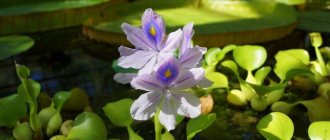If you forget to water your indoor flowers, there are certain types of plants that will work for you. They do not require special attention and frequent soil moistening. Their natural habitat is hot and dry regions. Therefore, such flowers are well adapted to retain water inside the leaves. In this article we will talk about several plants that do not need frequent watering.
Aloe vera
Daria Shevtsova / Pexels
Aloe vera is known as a healing plant. The gel-like juice from its leaves is used to heal wounds and sunburns. If you are going to test this for yourself, take only the lower leaves: they are more mature and fleshy. And do not cut off more than a third, otherwise the leaf may not recover.
How to care
Light . Aloe vera comes from Africa, so it is not afraid of dry warm air and bright light. This indoor plant can be kept on the windowsill even in summer.
Water . Aloe needs to be watered rarely: once a week in summer, once every two to three weeks in autumn and winter. Make sure that water does not get on the core of the plant - the leaf rosette, otherwise the aloe will rot.
Transplant . You should change the pot for aloe only when necessary, but not more than once every couple of years.
What else do you need to know . For the winter, if there is a lack of natural light, it is recommended to move the flower to a dark corner with a temperature no higher than 14 degrees. The plant will go into hibernation: its growth and metabolic processes will slow down. If you cannot find such a place, do not let the aloe “fall asleep”: make up for the lack of sunlight with a lamp.
What flowers are not afraid of drought?
You don’t have the time and opportunity to provide timely watering to your flower beds? Do flowers wither and dry up in the sun? The correct selection of drought-resistant plants that will not lose their appearance and will remain fresh even during the dry period will help solve the problem. These plants came to us from deserts or semi-deserts. Thanks to the special structure of leaves, stems and roots, they are adapted to high temperatures and drought.
If you're not sure whether a plant is adapted to living in dry conditions, look at its leaves. If they are “velvety” or “waxy”, we can say that the crop is adapted to the sun and will forgive you for rare watering.
When the flowerbed is constantly exposed to sunlight, you can decorate it with cheerful flowers. Drought-resistant plants, which are perennial and annual, will help you in this matter. Separately, drought-resistant grasses and shrubs are distinguished.
Drought-tolerant perennials :
- periwinkle;
- coreopsis;
- edelweiss;
- creeping phlox;
- sedums;
- evening primrose;
- sage;
- thrift;
- feverweed;
- splint;
- lavender;
- sagebrush;
- thyme;
- poppies;
- mallows.
Drought-resistant perennials
Drought-resistant annuals :
- annual asters;
- spurge;
- purslane;
- nasturtium;
- amaranth;
- Snapdragon;
- marigold;
- zinnias.
Drought-tolerant annuals
Drought-tolerant grasses and shrubs :
- gray fescue;
- cotoneaster horizontal;
- Cossack and common juniper.
Drought-resistant herbs and shrubs
Even dry, infertile soil, including sandy or rocky soil, is suitable for the growth of the listed plants.
It is impossible to talk in detail about each of the listed plants in one article. Therefore, we will focus on only five of them: echinacea, alpine aster, sedum, thyme and decorative onions. They are beautiful, unpretentious and combine well with each other, so they can be used in landscape design at the same time.
Ficus elastica
f2.8 / Shutterstock
Unlike its relative Ficus benjamina, Ficus elastica is very easy to care for. True, you won’t get flowers from him: for this he needs certain conditions, which are almost impossible to achieve in an apartment or even in a greenhouse at the dacha. But it is very good even without flowers.
How to care
Light . Ficus grows best in good light, so try to place it near a window. But not on the windowsill: direct sunlight can damage the leaves. You can also place the ficus in the shade, but then the bottom row of leaves may fly off.
Water . It is recommended to water the ficus when the top layer of soil is completely dry. In summer and spring you need to do this a maximum of twice a week, and in autumn and winter once is enough. You cannot fill the ficus with water, otherwise it will get sick and the leaves will fall off. In the warm season, you can spray ficus leaves from a spray bottle.
Transplant . While the ficus is young, it needs to be replanted every year. And an adult bush - as needed. You can understand that the ficus has become crowded by the amount of water in the pan: if after watering there is too much of it, it’s time to replant.
What else do you need to know . In nature, ficus grows up to 30 meters in height. In an apartment he is not capable of such feats, but he is quite capable of becoming a meter-tall tree. To maintain its decorative appearance, trim the tops. The procedure should be carried out in the spring.











